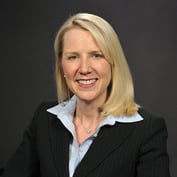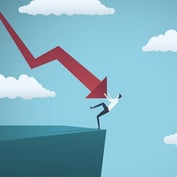It’s not likely that any of them will start belting out choruses of “Happy Days Are Here Again,” but if the members of Investment Advisor’s market strategy committee are unanimous on a single issue, it’s that 2004 wasn’t such a bad year and that 2005 will be better. It appears our luminaries are worth listening to, since they were pretty much on the money forecasting 2004 last year (see sidebar table,”So How’d They Do Last Year?” on page 76).
While it’s certainly something to keep an eye on, inflation isn’t considered to be much of a concern for this year, according to the panelists who post their monthly forecasts each month on IA’s asset allocation page. Worrying about inflation is more a matter for 2006, when the Federal Reserve chairman will not be named Greenspan.
There’s some disagreement about corporate profitability, with some panelists predicting a year of record earnings, while others are concerned about the ability of retailers to push along price increases to consumers who have gotten used to the idea that everything is on sale all the time or they won’t buy it. Merger and acquisition activity, which began to pick up in 2004, should further accelerate this year. That’s another reason the panelists are bullish on stocks.
All but one of our experts predicts increases for the major stock indexes, with several especially optimistic about the prospects for a rebound in the Nasdaq. At the same time, there are quite divergent opinions on the matter of technology stocks, with two panelists discerning opportunities in tech while an equal number predict technology will be among the worst performing sectors in ’05.
As for asset allocation, the panel’s average saw a shift of a few percent from cash to stocks while the average allocation to fixed income remained consistent: the average for 2005 is 61% stocks, 28% bonds, and 11% cash. On an individual basis, however, there was quite a bit of movement from year to year, with some panelists reversing their 2004 positions on stocks relative to bonds or bonds versus cash. Let’s look at those individual positions.
Lincoln Anderson, LPL Financial
“I think it will be a fine year,” says LPL’s managing director and CIO. “On the economy, I expect it to be a really strong year, with another solid up move in company profits. I’m expecting the earnings gain in 2005 to overwhelm whatever increase occurs in interest rates.”
Although he’s in the minority among the panel, Anderson sees a positive outlook for the technology sector in 2005 due to a number of factors–company profitability is rising, real GDP is growing, fixed investment spending on equipment is picking up, and pricing power is finally returning to the sector.
“A pickup in GDP or in sales volume of 3% or 4% is a nice thing, but where companies really make their money is on the price side. If they can get a lift in selling prices that applies to 100% of their sales, rather than just a sales increment, it has a much bigger impact on profitability. For most of the other sectors, the big winners and losers have already been sorted out. In technology, it’s still a slugfest. That’s what needs to be resolved in technology before things really go, but I think it’s being resolved.”
The only negative Anderson sees on the horizon is the question of inflation, which he thinks will be a big issue in 2006.
Mark Balasa, The Alpha Group
Going into 2005, Mark Balasa, who gathers and reports on the allocations and forecasts of the Alpha Group of advisors, is boosting the group’s portfolio asset allocation to 70% stocks. Don’t take that to mean he’s filled with excitement about what’s going on in the stock market, however. “With rates rising, we’re concerned about the total return for the fixed-income side of the portfolio. So by default that gives us more in equities,” he says. “It’s not that we’re doing cartwheels over equity values, it’s just that we’re kind of down on bonds.”
The one area of the equity market where Balasa is the most optimistic of our panelists is the Nasdaq, due to its preponderance of tech stocks. “The idea is that the valuations for techs are not cheap, but we think coming off the lower return for that index, that it’s got more opportunity for the coming year,” he explains. Among the reasons he cites is the fact that many companies have shied away from spending on technology upgrades and other new equipment for the last few years, but now have more cash on their balance sheets and are likely to start spending it.
Balasa is also an unrestrained optimist when it comes to real GDP growth, although he admits it’s something he can’t quantify. “It’s really just a gut feeling,” he admits. “In talking to our clients, a lot of whom are small business owners, there seems to be a lot going on. It seems to be positive and even when we look at items in The Wall Street Journal and other sources for earnings and hiring plans and spending plans, it all seems to indicate that things are going okay. Of course, there could always be a shock to the system to counteract that, but everything else being equal and assuming there’s not a terrorist attack or something on that order, things are looking up.”
Richard Bernstein, Merrill Lynch & Co.
While regular monthly panelist Richard Bernstein of Merrill Lynch supplied his forecast numbers, he was unable to participate in this year’s forecast discussion. Fortunately, a fellow executive–Senior VP/Senior Economist Sheryl King–provided some insight into how Merrill sees the new year shaping up. “We’re looking for variable weather and a little bit cloudy in the first half of the year, is how Dave Rosengard (Merrill’s chief North American economist) likes to put it,” she says. “We’re seeing some slowing of growth in the first half of the year, with the consumer being our key source of worry.”
The worries about consumers are due to several factors, according to King. One is that despite the fact that oil prices have backed down somewhat, the price of home heating oil is elevated well above last year’s levels, which hits consumers at lower income levels especially hard. “In addition, we think that consumers have been supported by the stimulative fiscal and monetary policy over the past few years,” says King. “That’s where they’ve really gotten the wind to drive their spending recently, and that’s not going to be there next year. It’s also helped to bring down the savings rate to critically low levels–0.2% of personal disposable income is what savings is sitting at right now–and we think that they just simply have to start rebuilding that.”
Merrill Lynch’s economists don’t think inflation will be much of a problem in 2005. “We do not think there is still very much in the way of pricing power at the retail level. The numbers that we see from retail sales and from the CPI numbers continue to suggest to us that the retailers have to drive sales by keeping discounts on, and we don’t see that trend reversing any time soon,” King reports. “What we’re most concerned about is that you’re seeing rising input prices but you’re not seeing the big pass-along to the consumer.” Those, she says, are the conditions for a profit squeeze, which “makes us a little more concerned on the profit side.”
Gail Dudack, Sungard Institutional Brokerage
“Profit margins will be the key to successful investing in 2005,” wrote Gail Dudack in response to our questions on the coming year. “Profit margins will be under pressure due to higher costs and companies that can pass on higher fuel and transportation costs will be winners.” Of course, as SunGard’s managing director of research and chief investment strategist, she’s obviously spent a lot of time thinking about what we’re likely to see this year.
Dudack thinks that last year was one of transition–in monetary policy, earnings growth rates, and market leadership–but that 2005 “will be about understanding the long-term implications of these transitions, and how they impact stocks in the New Year. We believe the impact will be seen in inflation, interest rates, profit margins, and currencies–our themes for 2005.”








 January 01, 2005 at 02:00 AM
January 01, 2005 at 02:00 AM










